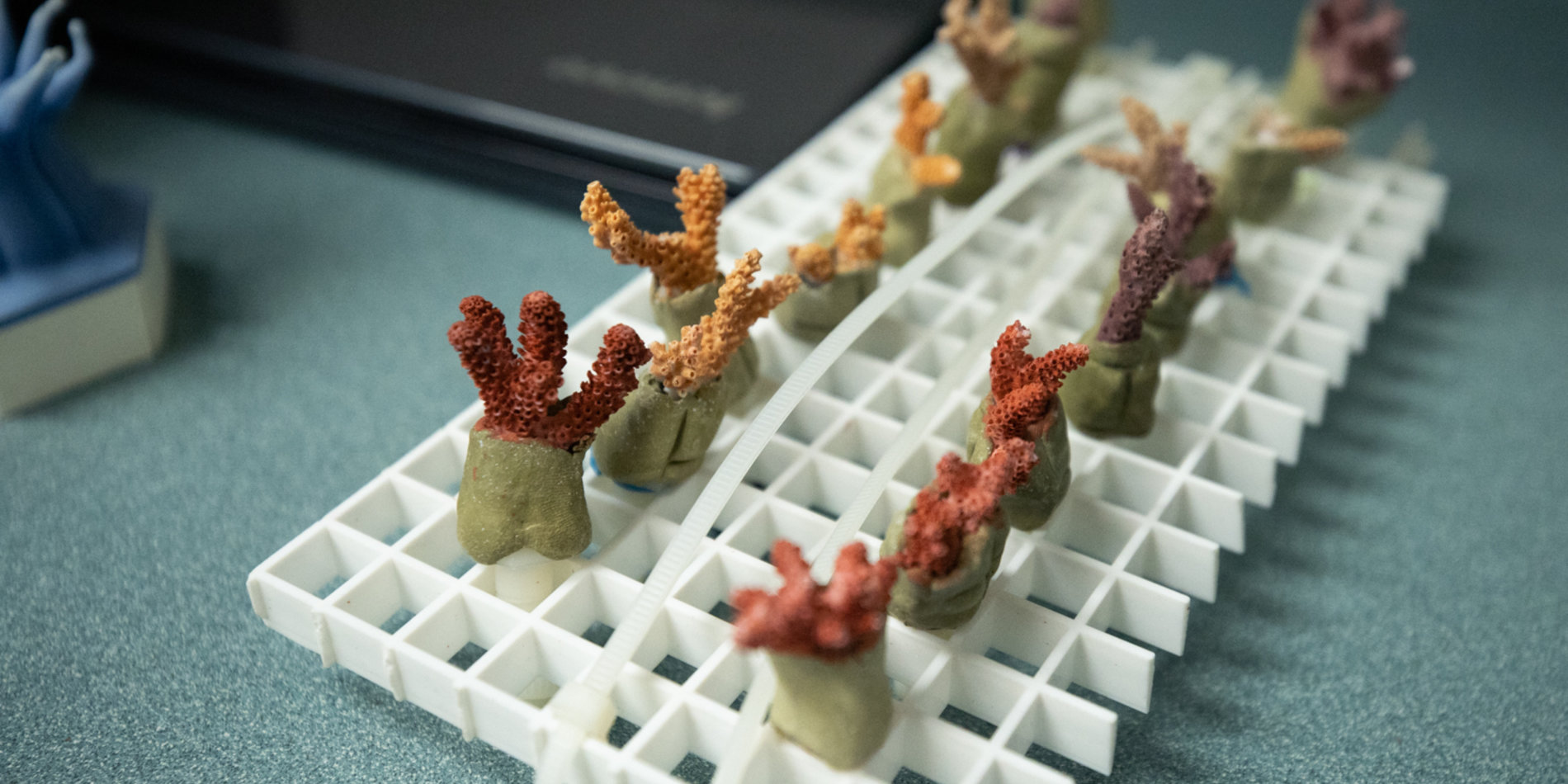New study uses machine learning to understand coral reef tipping points
A new study, published this week in the Proceedings of the Royal Society - Biological Sciences, uses machine learning to examine interactions between human and environmental conditions impacting Hawaiian reef ecosystems. The study, led by the Stockholm Resilience Centre in collaboration with the Stanford Center for Ocean Solutions and other Ocean Tipping Points partners, is the first of its kind to quantify the influence of human and environmental conditions driving coral reef systems where both fish and benthic organisms, such as hard coral and algae, are taken into account. Identifying these key factors will inform coral reef management and help practitioners effectively anticipate, avoid, and respond to changes in coral reef health and resilience.
“In Hawaiian coral reef ecosystems researchers have collected a lot of data over space and time. This study takes a novel approach to analysis and synthesis of this complex data. The results provide critical insights for managers and provide a pathway to sustainability,” said Larry Crowder, study coauthor, Edward F. Ricketts Provostial Professor of Marine Ecology and Conservation at Hopkins Marine Station, and senior fellow at the Stanford Woods Institute for the Environment.
Coral reefs are under increasing pressure as human influences such as overfishing, climate change, and pollution wreak havoc on ocean ecosystems worldwide. These pressures often cause sudden and dramatic shifts in species, nutrients, and habitats. Such major shifts, known as tipping points, are hard to anticipate, can be very difficult to reverse, and typically result in negative impacts to reef biodiversity. In the long-term, these changes can lead to collapsed fisheries, coastal dead zones, dying coral reefs, and polluted waters.
Not immune to human impacts, Hawaiian Island reefs have notably been on the decline, with coral bleaching due to sea temperature rise a main trigger. These reefs represent both economic and cultural value as locals depend on healthy nearshore ecosystems for food, clean water, protection from storms, commerce, and recreation. Dramatic shifts in reef health that result from crossing tipping points could be costly and directly impact the community, reducing fishing incomes, closing beach access, and inhibiting the harvest of culturally valued species.
To better understand what drives changes in coral reef systems, the research team examined data from 20 different human and environmental drivers of Hawaiian Island reefs. Data collected on human drivers included commercial and non-commercial fish catch, invasive species, effluent, habitat modification, and sedimentation on reefs. Environmental data gathered from satellites included sea surface temperatures, chlorophyll, irradiance, and wave power. Using a machine-learning regression approach, the team was then able to link the occurrence of different reef systems to specific human and environmental variables in a given place.
Their results highlighted which factors impact different reef conditions and how a reef’s natural setting may either expand or narrow the opportunity space for management interventions. They found that addressing fishing pressure and water quality is critical to avoid degraded reef systems and highlighted environmental factors that need to be accounted for in a given location. Amongst these wave exposure, depth, and complexity of reef structure were found to be key influential factors in determining the reef size and potential for recovery. Meaning reefs with more complex structures at deeper depths provide a safe haven from waves, while also allowing for higher numbers and types of species to flourish.
“While there is little that can be done about broad-scale environmental drivers such as wave exposure, understanding how environmental conditions shape coral reefs can help inform management strategies and identify priority areas,” said Jean-Baptiste Jouffray, PhD candidate at the Stockholm Resilience Centre at Stockholm University and lead author of the study.
Thus, designing effective management interventions will require focus on human interactions, while keeping in mind the natural limitations set by the local ocean environment.
“In 2016, the State of Hawai'i pledged to effectively manage 30 percent of its nearshore waters by 2030. Our analyses, together with our publicly available database, represents valuable resources to assist managers and policy-makers in this process,” said Lisa Wedding, research associate at the Stanford Center for Ocean Solutions and paper co-author.
This paper is the culmination of research from the Ocean Tipping Points research project, an interdisciplinary collaboration to develop results and insights that are useful, usable, and used by managers to improve the condition of marine ecosystems. It also is helping inform the Stanford Center for Ocean Solutions Managing Ocean Risk initiative in the Arctic, aimed at identifying interventions that can more effectively and comprehensively assess and manage risks to marine ecosystems and ecosystem services.
Header Photo: Stanford researchers illuminate different coral reef regimes across the main Hawaiian Islands, such as the protected coral reef in Hanauma Bay (credit: Lisa Wedding).
See the interactive map to explore the distribution of four reef regimes throughout the Hawaiian archipelago.



